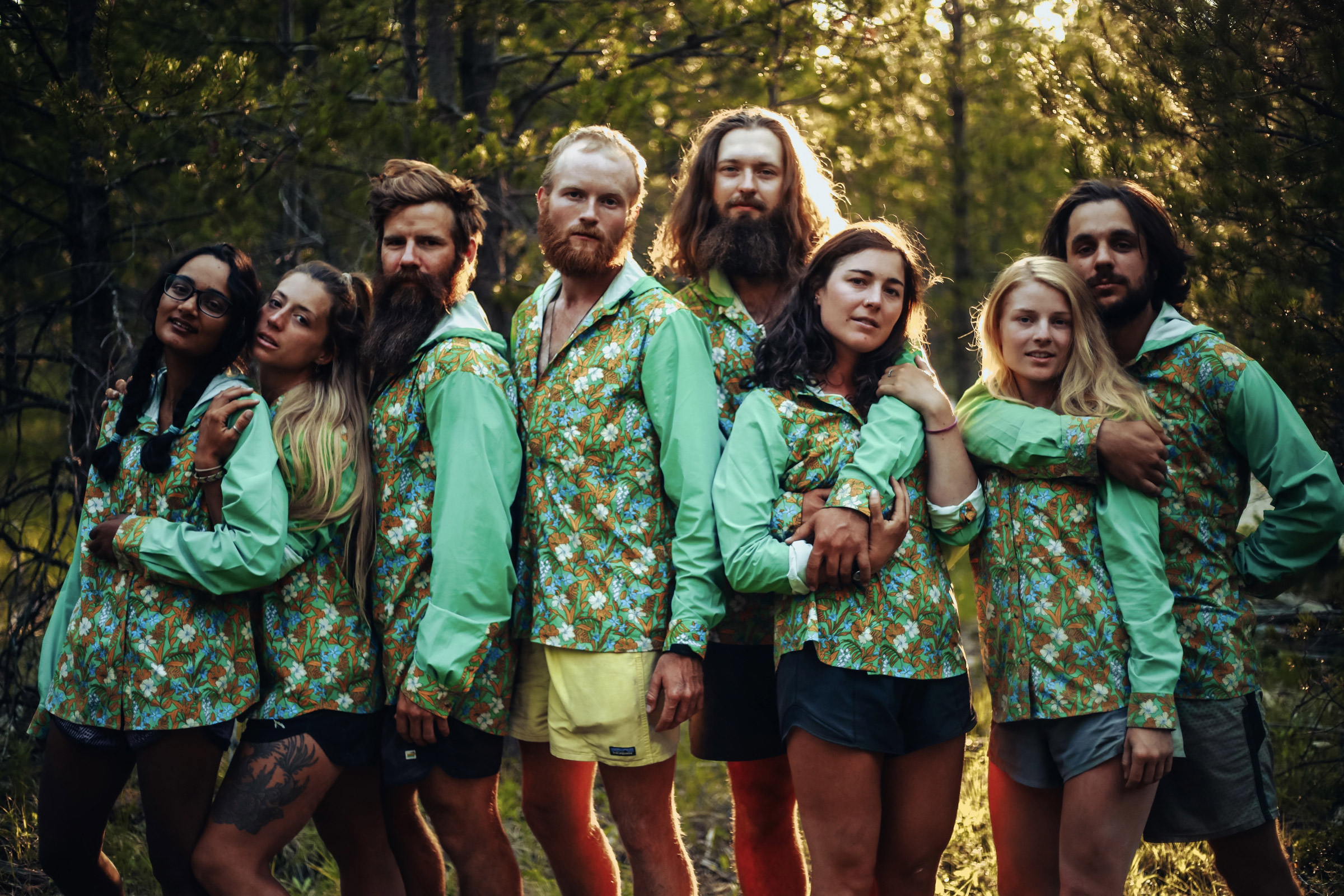If you’re trying to find Dr. Morgan “Blaze” Brosnihan, PT, DPT, look for the red van parked somewhere along the Pacific Crest Trail (PCT). If she’s not in her van, check the nearest trail. She and her loyal assistant, Honey the golden retriever, are probably just out for a hike or helping a thru-hiker with an injury.
Since 2021, Brosnihan has worked out of her van as a traveling physical therapist, following the PCT thru-hiker bubble as it moves north. She provides treatment for injuries and recommendations to prevent further injury, a much-needed service for the thousands of thru-hikers who attempt to hike across the country every season.
Brosnihan started her journey as a thru-hiker herself. She hiked the PCT in 2019 and realized in the process that the thru-hiking community needed a physical therapist.
She was at the famed trail angel hostel, Hiker Heaven in Agua Dulce, Calif., around mile 500 of the PCT. Until that point, she had heard plenty of hikers talking about injuries, but here she met several injured hikers who’d been laid up for days and clearly needed help.
“That’s when I kind of started to notice and wonder, who’s gonna help them?” she said. “We’re in Agua Dulce. There’s barely a grocery store. There’s certainly not going to be an endurance-athlete-oriented provider here.”
That thought stuck with her as she continued hiking the remaining 2,000 miles of the PCT.
From Thru-hiker to Blazing a New Trail
Before her 2019 hike, Brosnihan had been living in a van, taking travel PT contracts. She returned to that job after finishing her thru-hike. But when COVID upended the world of travel therapy, it looked like those contracts might never return.
So, she started building Blaze Physio into what it is today. Now, her entire mobile PT business focuses on meeting the needs of thru-hikers. Now the thru-hiking community affectionately knows her as “Blaze.” Of course, she works with other athletes and offers telehealth services to hikers anywhere. But she mostly caters to the thru-hiking crowd because of their unique needs.
Her Instagram page is a mix of helpful exercise videos and cute dog content. On it, she’ll commonly get messages like, “Hey, I just got to town. Are you free today? I’m hoping not to zero. My foot hurts.”
She’s always a little bit on call, living in the chaos that cross-country thru-hikers bring, and treating their injuries along the way.
While she mostly works along the PCT, she plans to expand where she parks her red van beyond California, Oregon, and Washington in the near future.
Different Trails, Different Injuries

Tendonitis, as a general category, is the most common type of injury Brosnihan sees. But that’s to be expected among anyone who’s physically active for 10 or more hours per day.
“When the load exceeds your recovery, that’s ripe for tendinitis,” she said. And the type of tendonitis-related injuries varies from trail to trail, too.
The most common injuries on the Appalachian Trail, which is more steep hiking over varied terrain, tend to be load-bearing injuries. On the PCT, which is more “like walking on an incline treadmill,” as she put it, repetitive use injuries are more common.
“There’s more IT band pain on the AT, but there’s more shin pain on the PCT,” she said.
Thru-Hiking Injury Trends by the Mile
The trends go deeper beyond specific trails, too. As she treated hikers at certain locations along the PCT, Brosnihan started seeing the same injuries in the same geographic locations.
“There are very specific injuries in specific towns on the PCT,” Brosnihan said. For instance, she sees a ton of shin pain at mile 550, when the hikers get into Tehachapi. The previous segment has a lot of elevation loss from the previous town of Wrightwood, where hikers descend from Mt. Baden Powell.
By this point on the PCT, she continued, “It’s the fourth week for most people, so they start bumping mileage up. And then they feel like they can bump it up because they’re going downhill and it feels easier. And so it just blows out people’s shins. It’s like driving a car down a mountain; easier on the engine, but harder on the brakes, which in this case is the shins and knees.”
Brosnihan created an e-book highlighting this and other injury trends she sees, PCT Injury Trends: The First 800 Miles.
“My goal with the ebook is to help people see why that might be a trend and manage factors to help keep them from getting that injury in that section of the trail,” she said. “Every time I notice a trend that I think has preventable factors, I plan to keep putting that info out there.”
Pay Attention to Recovery

“The recovery side of things is what thru-hikers overlook the most,” Brosnihan said. She often treats hikers who do a good job of slowly ramping up their mileage, to ensure the load isn’t too high. But they aren’t paying enough attention to recovery, so inflammation starts to persist. Tendonitis occurs when the load exceeds the recovery, after all.
“They never took a day off, they aren’t sleeping great, they’re not getting very much protein. All these things are affecting their recovery. So they really can’t afford to ramp up their mileage.”
So if a storm just kept you awake all night, you shouldn’t increase your mileage the next day. And that double serving of ramen noodles isn’t going to provide the protein you need for recovery, either.
Blaze Physio’s #1 Training Tip: Weight Training
When asked what prospective hikers could do to prevent injury on a thru-hike, Brosnihan has one simple piece of advice: “I want people to hear that scary word fracture, then hear that weight lifting will greatly reduce their risk.”
Stress fractures are the most common injury that will end your hike, and though they’re less common than everything that fits under the wide umbrella of tendonitis, they’re also a common thru-hiking injury. Lifting weights increases your bone density, which helps prevent those bones from cracking under the stress of a heavy backpack and constant 20-mile days.
“The more you progressively load your bones with weightlifting, the denser and more resilient the bone gets,” she continued. “It’s also the most time efficient,” which helps if you’re balancing work with training.
“To train for a thru-hike, you’re likely not going to be able to do hours and hours of activity,” she continued. “But if you’re weightlifting, you can get a big stimulus in a much shorter amount of time, and that’s more realistic.”
She added that heavier weights create the biggest payout, but any resistance training is beneficial: “Thru-hiking draws a pretty nomadic crowd, people living out of their Subarus and such.” So, even a set of resistance bands that tuck into the trunk can work.
What’s Next for Blaze Physio?

Blaze Physio will be on the West Coast for the remainder of the 2023 thru-hiking season. For 2024, Brosnihan has plans to take her big red van to other trails across the country.
In January 2024, she’ll be along the Florida Trail, and then in Georgia along the Appalachian trail for February and early March. Then she’ll head across the country to the Arizona Trail, before heading back to the PCT. After that, she’ll head to the Rockies to help Colorado Trail and Continental Divide Trail hikers in July before driving back west to the PCT to treat southbound thru-hikers.
In short, she’ll be wherever the hikers need her.








